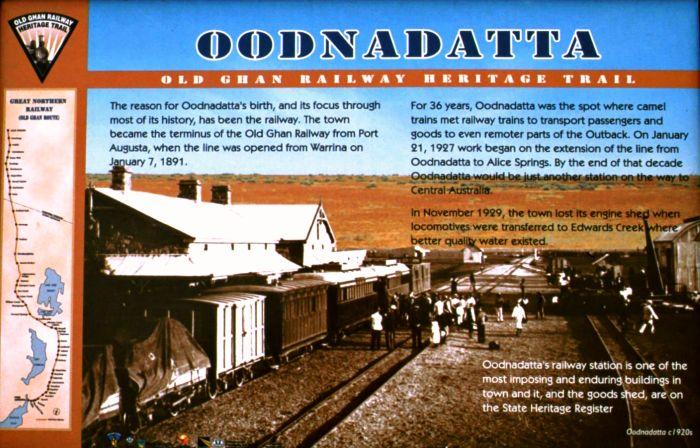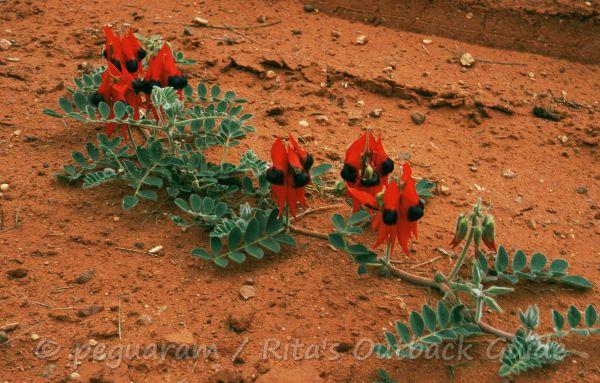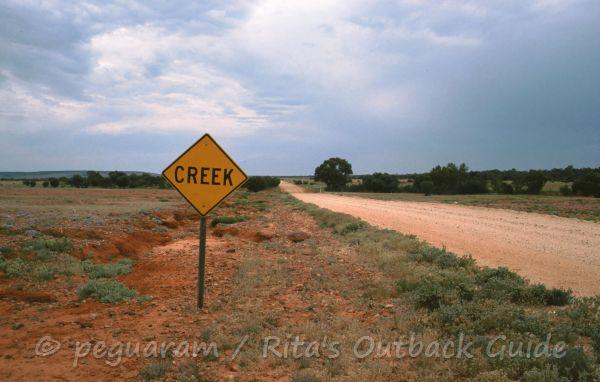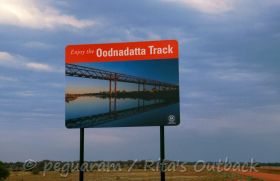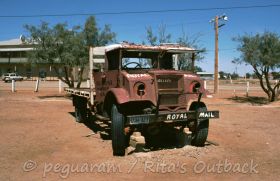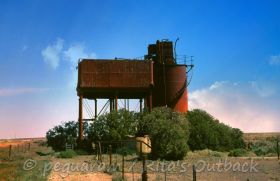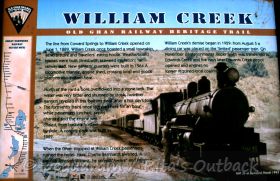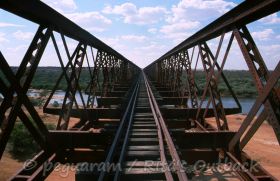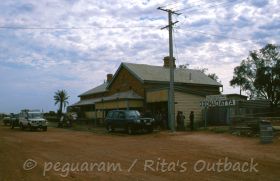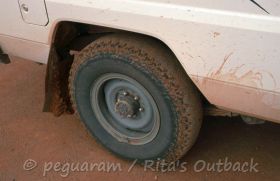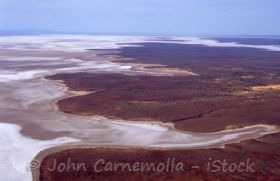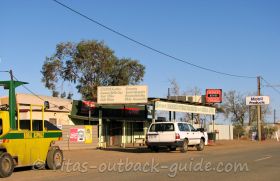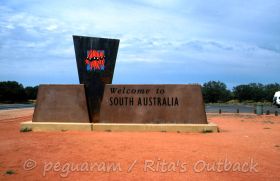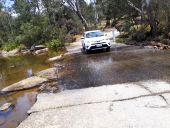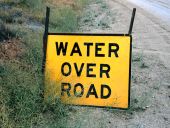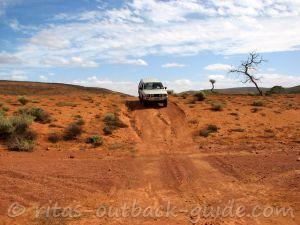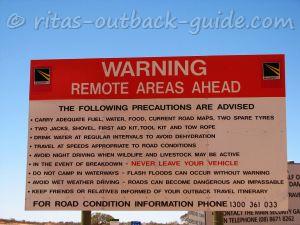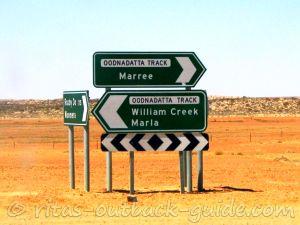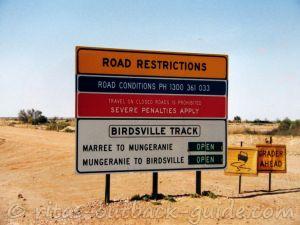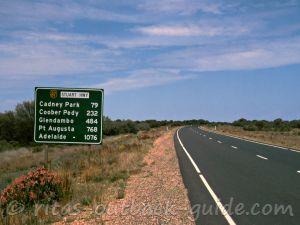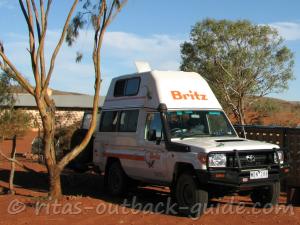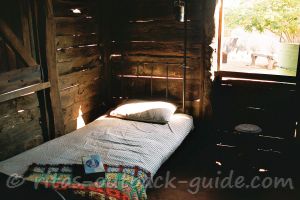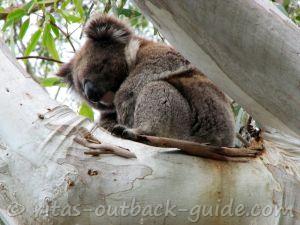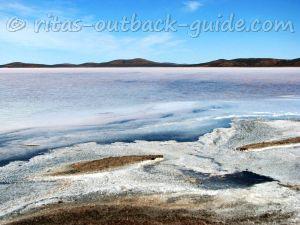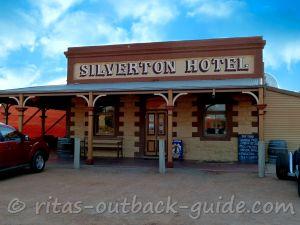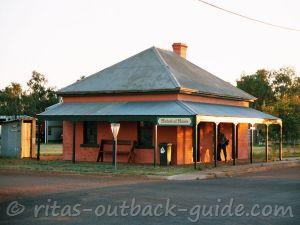Oodnadatta to Marla
The final stage of the Oodnadatta Track
When you followed my journey so far, today's section from Oodnadatta to Marla is your last day on the Oodnadatta Track. I
hope, you enjoyed this famous route as much as I did. It is a great
Outback travel experience.
I love to learn about the history of the places I travel through, so I totally enjoyed following the old Ghan heritage trail and learn about
the fascinating history of the Australian Outback.
Watch out for
these informative signs from Port Augusta to Alice Springs, throughout
the Flinders Ranges, and of course along the Oodnadatta Track.
But before we are going back on the track again, we'll have a close look around Oodnadatta.
Oodnadatta
This is tiny settlement gave the track its name. Oodna is located
about 1000 km north of Adelaide. The town has a population of about 160, and offers basic facilities.
The name Oodnadatta is relating to an Aboriginal word meaning "blossom of the mulga".
Oodnadatta is the last stop for travellers to stock up before heading to the
Simpson Desert, Dalhousie Springs, and other beautiful places in the
region.
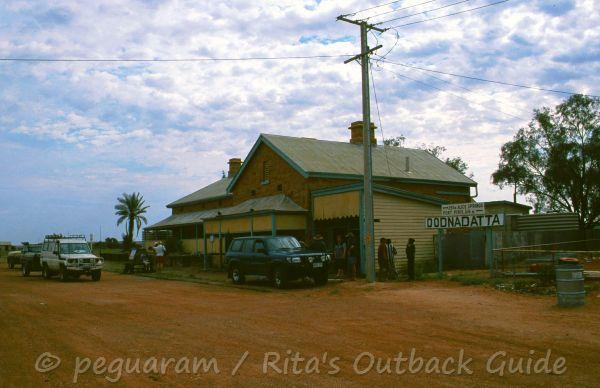 The former railway station
The former railway stationQuick Facts
- Population: 166 (2011 census)
- Location: Approx. 680 km north of Adelaide on the Oodnadatta Track
- State: South Australia
- Post Code: 5734
- Elevation: 118m
- Time Zone: Central Standard Time (CST), Daylight Saving between October and April
-
Climate & Best time to visit:
Oodnadatta has a hot & dry desert climate, the highest temperature recorded in Australia was 50,7°C in Oodna on 2nd January 1960.
April to October is the best time to visit. -
Facilities include:
Hotel, Cabins, Caravan Park, Petrol Station, Supermarket, Health Service, Police Station
European History
Oodnadatta was proclaimed a government town in 1890. The town's heydays
were merely more than 35 years, while it was the terminus of the Great
Northern Railway from 1891 until 1929. Like Marree, it played an
important role in opening up Australia's harsh inland.
The hospital was the first AIM (Australian Inland Mission)
nursing home, opened in 1912. Rev. John Flynn had the vision to cover
the Australian inland with a "mantle of safety". He established several
bush hospitals across the country, and finally founded the Royal Flying
Doctor Service.
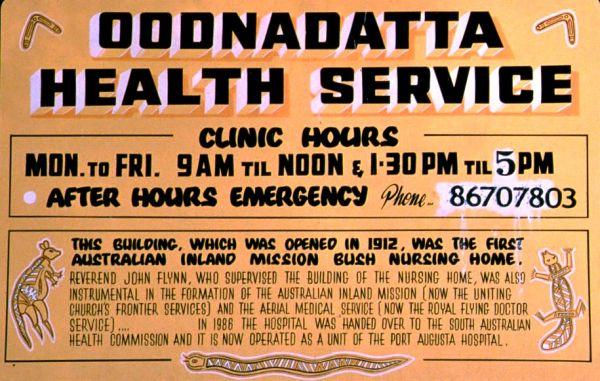
Points of interest in Oodnadatta
- The Pink Roadhouse has cult status in the
region, and with travellers. For nearly 40 years it was run by Adam and
Lynnie Plate. The Plates were the best source of information about the
Oodnadatta Track and the adjoining areas.
The late Adam Plate placed heaps of funny and very informative mud maps along the track and the surrounding areas. - In September 2013, a little more than a year after her husband was
killed in a car accident, Lynnie Plate handed over the Pink Roadhouse to
the new owners Neville and Adriana Jacob.
The roadhouse continues to offer everything a traveller needs in this remote area, a caravan & camping park included. And it sure continues to be pink! - The historic railway station is one of the most imposing and enduring buildings in town, together with the goods shed it is on the State Heritage Register. The railway museum is located in the building.
- Local Aborigines run the Transcontinental Hotel,
the Railway museum, and the general store. There's not much more than
one main street, so you won't miss the places of interest.
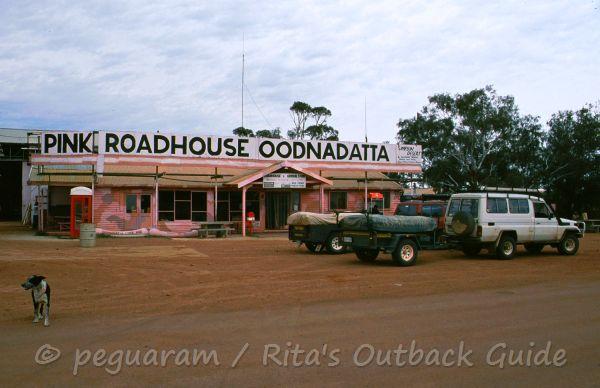 The famous pink roadhouse
The famous pink roadhouseOodnadatta to Marla
The third and last section of the Oodnadatta Track leaves the route of
the Ghan so there are no railway sidings or other historical stuff along
the way to Marla.
Angle Pole Memorial is just a few km outside of Oodnadatta and
marks the point where the Old Telegraph Line and the old Ghan line turn
straight to the north. The memorial commemorates all those involved in
the building of the Overland Telegraph Line between Adelaide and Darwin.
The topography along the track is fairly flat, occasional tree-lined creek beds make a change in the scenery.
If you are lucky and travel in spring after some good winter rain. you can see carpets of wildflowers. Otherwise there is just more gibber.
Even if there is no more history to explore as on the first sections of
this historic route, it is a great experience to travel here.
Marla
This is a tiny town with a population of 100. Marla was
established in 1980 to service the increasing traffic along the Stuart Highway
as it was planned to tar the entire road from Adelaide to Darwin.
Marla offers a huge roadhouse, a motel, caravan park and other essential
services for travellers.
The Oodnadatta
Track meets the Stuart Highway near Marla, 1099 km north of Adelaide.
I hope you enjoyed the last stage of the track from Oodnadatta to Marla. Wherever you go from here, enjoy the South Australian Outback.
Alternative routes & detours
If you are in a hurry, and don't want to drive along the entire Oodnadatta Track, you can take several short cuts to the Stuart Highway.
Back on this main highway, you have the choice of travelling north to Darwin, or south to Port Augusta.
- William Creek to Coober Pedy - 165 km
This is a remote and lonely track that passes by Anna Creek homestead and leads through the Woomera Prohibited Area. It is a public road, but you have to keep on the track. No permit is required for this route. - Oodnadatta to Coober Pedy - 195 km
Another lonely track that has not much to offer but sheer Outback and remoteness. For the last 20 km before you arrive Coober Pedy you'll travel across the moon plain. It is a lunar-like landscape of rocky plains, an experience you hardly can imagine until you really see it.
The moon plain was the set for quite a few Aussie movies like Mad Max Beyond the Thunderdome, Priscilla Queen of the Desert, and others. - Oodnadatta to Cadney Park - 161 km
This is definitely the most rewarding and interesting route with a stunning scenery across the Painted Desert. This section is worth to be described on a separate page, click here to discover this stunning place.
Oodnadatta Track -> the route step by step
Don't miss the articles below which give you many more details about the route.
Get general facts, an introduction and overview of the track (617 km)
Discover the history of the early days in this fascinating town
The first section of the Oodnadatta Track is in my
opinion the most diverse part of the track (204 km)
This small town offers everything a traveller needs. You'll be surprised
what you'll find in this tiny village
See more relics of the Old Ghan, including the huge Algebuckina railway bridge (202 km)
First discover the township Oodnadatta, before you go on the last leg of the track (211 km)
Don't miss to read this page, it also includes useful tips by Outback Guide readers
Read about Australia's largest lake which only fills every couple of years
Find camp spots, where to get fuel, a good meal, and a cold beer
Outback South Australia is a wonderful place to explore, don't miss it
Enjoy this most interesting (and my favourite) track in the South Australian Outback.
Below you'll find more useful articles to help you plan your journey.
- Home ›
- Oodnadatta Track ›
- Marree
